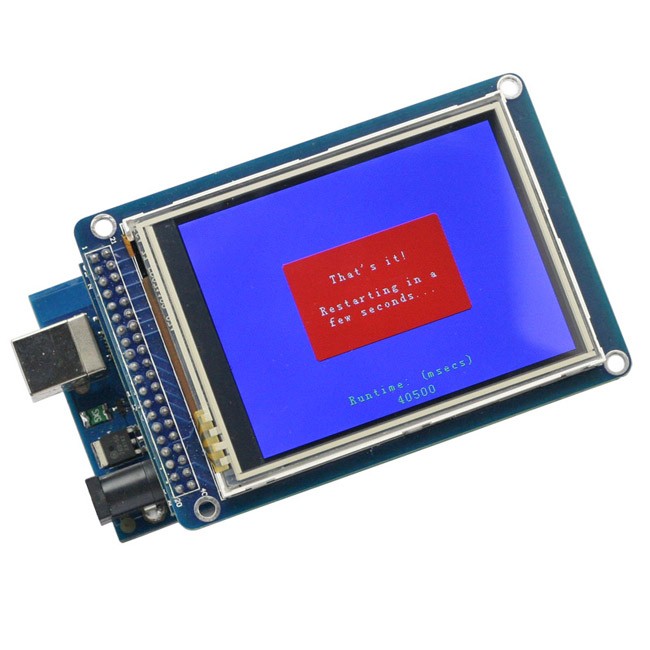

Ok, now I will explain how we can make the home screen of the program with the set back color function. The LED in the button and initially call the draw home screen custom function which will draw the home screen of the program. Next, we need to define the phones that are coming with the libraries and also define some variables needed for the program in the setup section we need to initiate the screen and the touch define the pin mode for the connected sensor. The parameters of this object depend on the model of the TFT screen and shield, and these details can be also found in the documentation of the libraries. Ok, after we have included the libraries we need to create you TFT and you touch objects.
#3.2 tft lcd arduino tutorial how to
Rinky dink, electronics, comm and also find a lot of demo examples and detailed documentation of how to use them.
#3.2 tft lcd arduino tutorial download
You can download these libraries from his website.

The libraries enable really easy use of the TFT screens and they work with many different TFT screen sizes shields and controllers. I would like to say thanks to him for the incredible work he has done. I will use the u TFT and you touch libraries made by hanging Carlsen here. Okay, now we are ready to go to the arduino code. I will use the pin number 13 as VCC by setting it right away hi in the setup section of the code. We will use the ground, pin the digital pins from 8 to 13, as well as the pin number 14 the 5 volts pin are already used by the TFT screen. Pin header like this by soldering two pin headers and bent one of them, so I could insert it in between the Arduino board and the TFT shield here’s the circuit schematic. For the first example, I will use the HC s ro for ultrasonic sensor then, for the second example on RGB LED with three resistors and a push button for the game example.Īlso, I had to make a custom made. Now we will go through each of these examples and step by step, explain the codes behind them, but before we do that, let’s see what hardware we need for this tutorial as an example: I’m using a 3.2 inches TFT touchscreen in a combination with a TFT LCD Arduino mega shield, we need a shield because the TFT touchscreen works at 3.3 volts and the Arduino mega outputs are 5 volts. We can play the game using the push button or even using the touchscreen itself. A replica of the popular flappy bird game for smartphones. The third example is a game actually it’s. So the sliders can move from 0 to 255 and with their combination, we can set any color to the RGB LED, but just keep in mind that the LED cannot represent the colors that match accurate. The next example is controlling on RGB LED using these three RGB sliders, for example, if we start to slide the blue slider, the LED will light up in blue and increase the light, as we would go to the maximum value. The output of the sensor or the distance is printed on the screen and using the touchscreen we can select the units either centimeters or inches. The first example is distance measurement using ultrasonic sensor. For that purpose, I composed the following three examples.


 0 kommentar(er)
0 kommentar(er)
